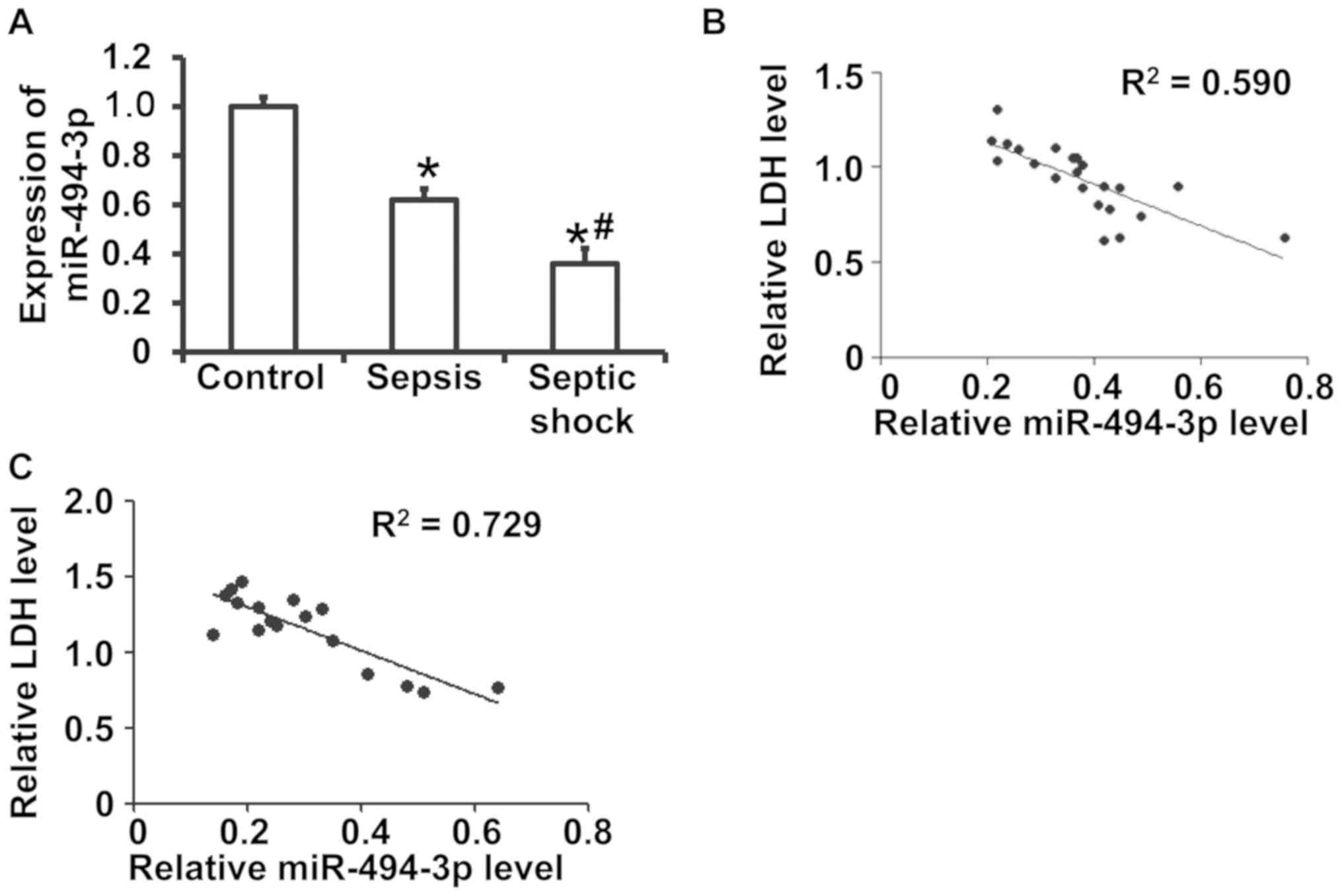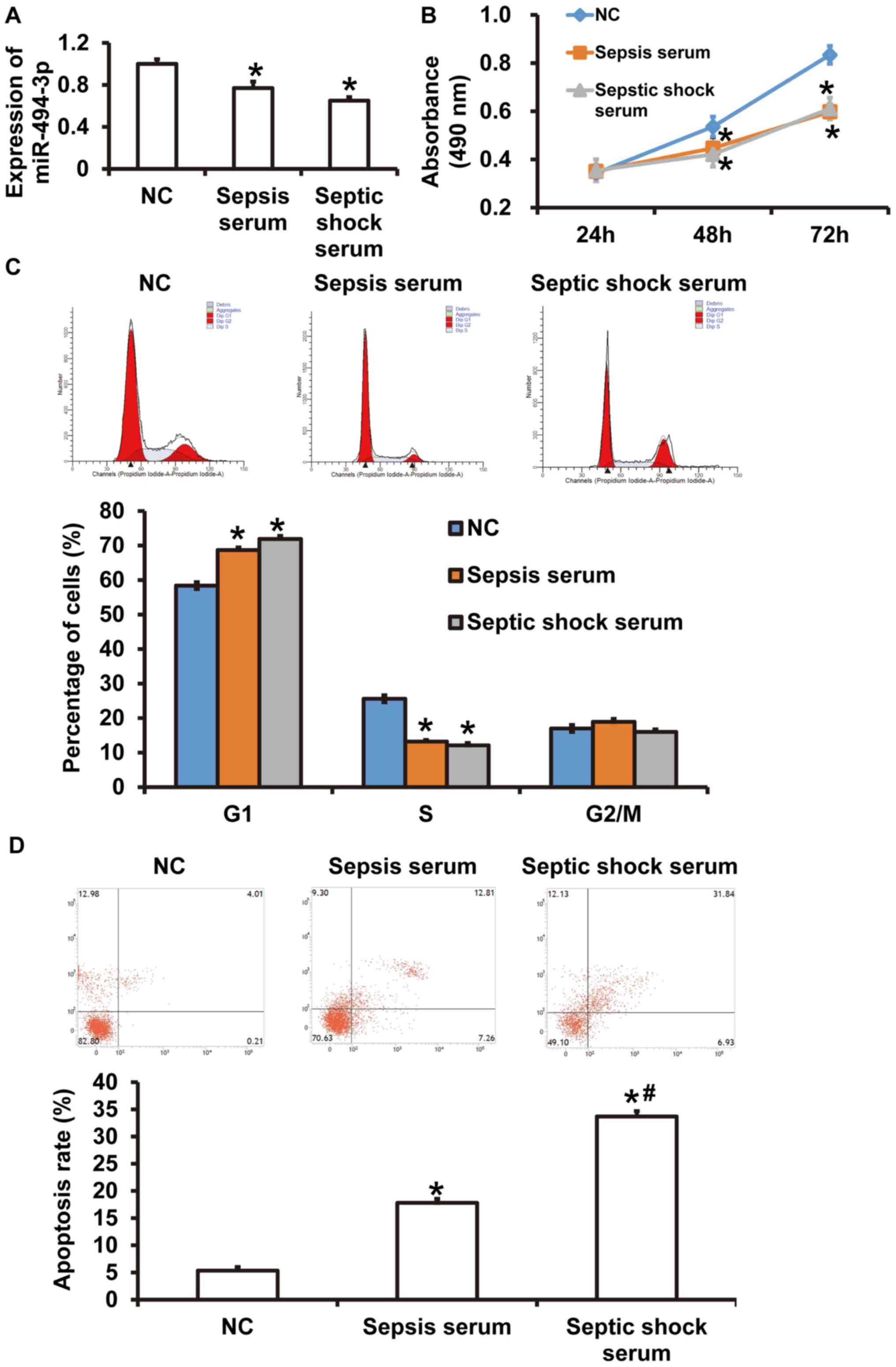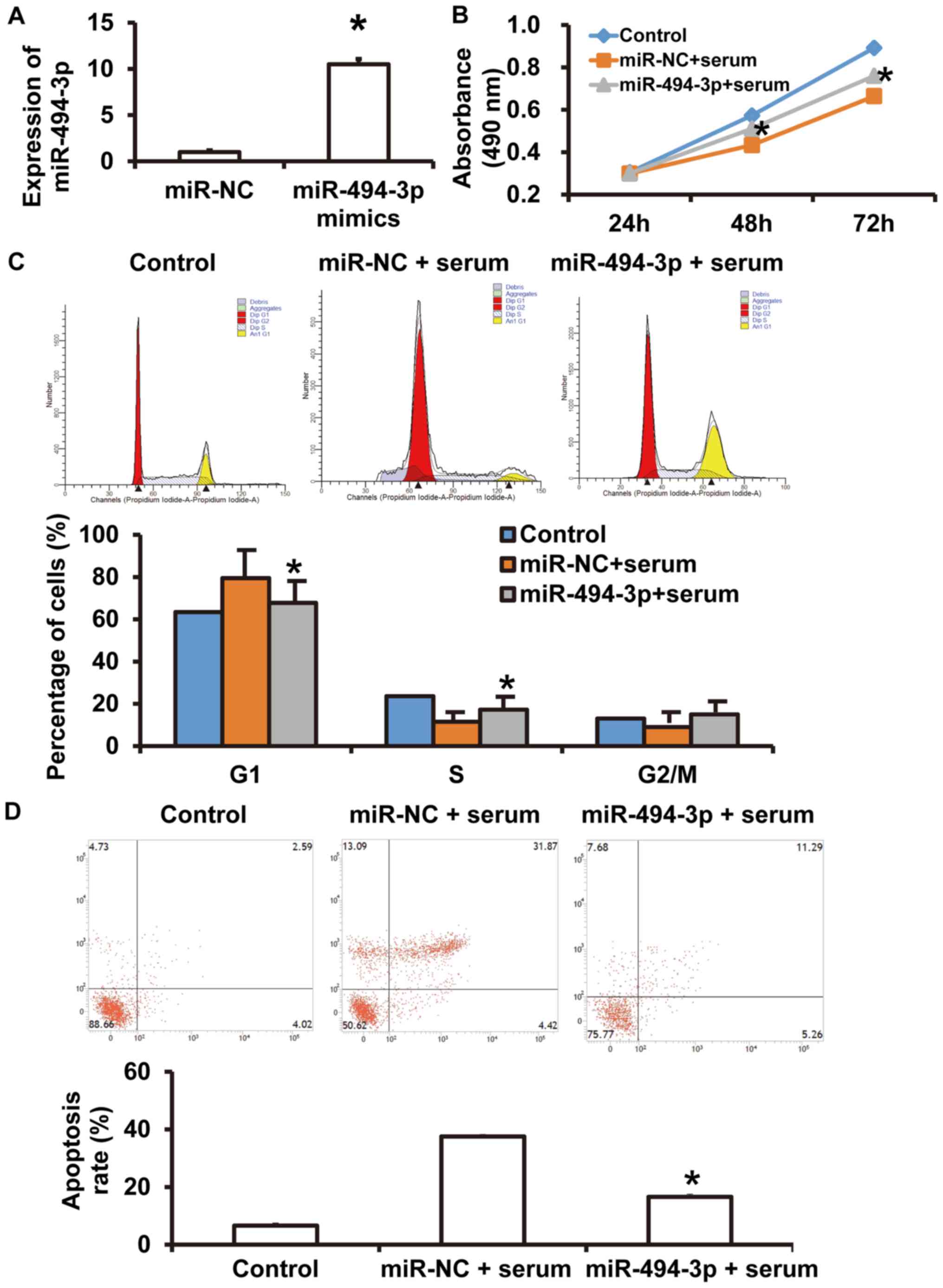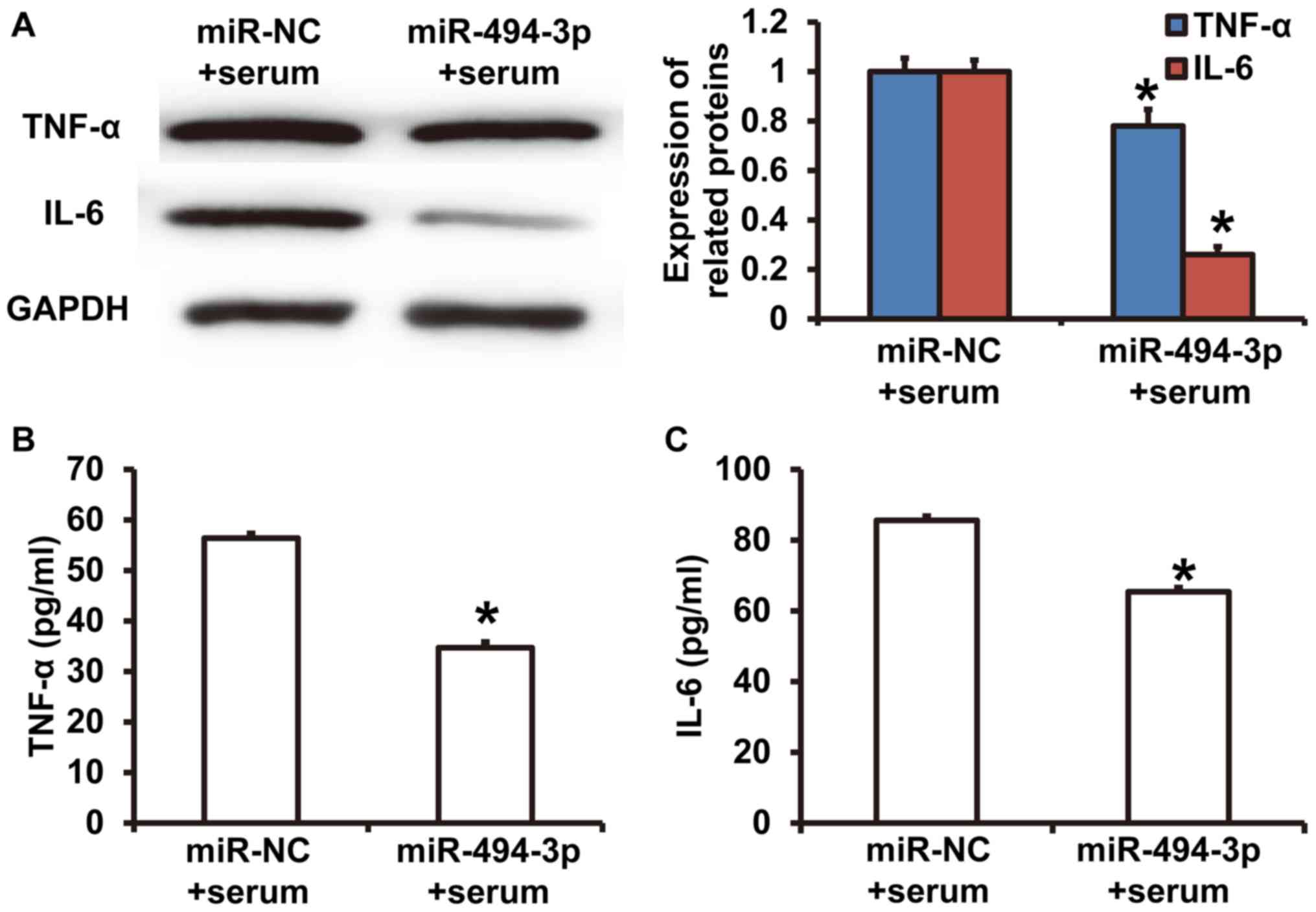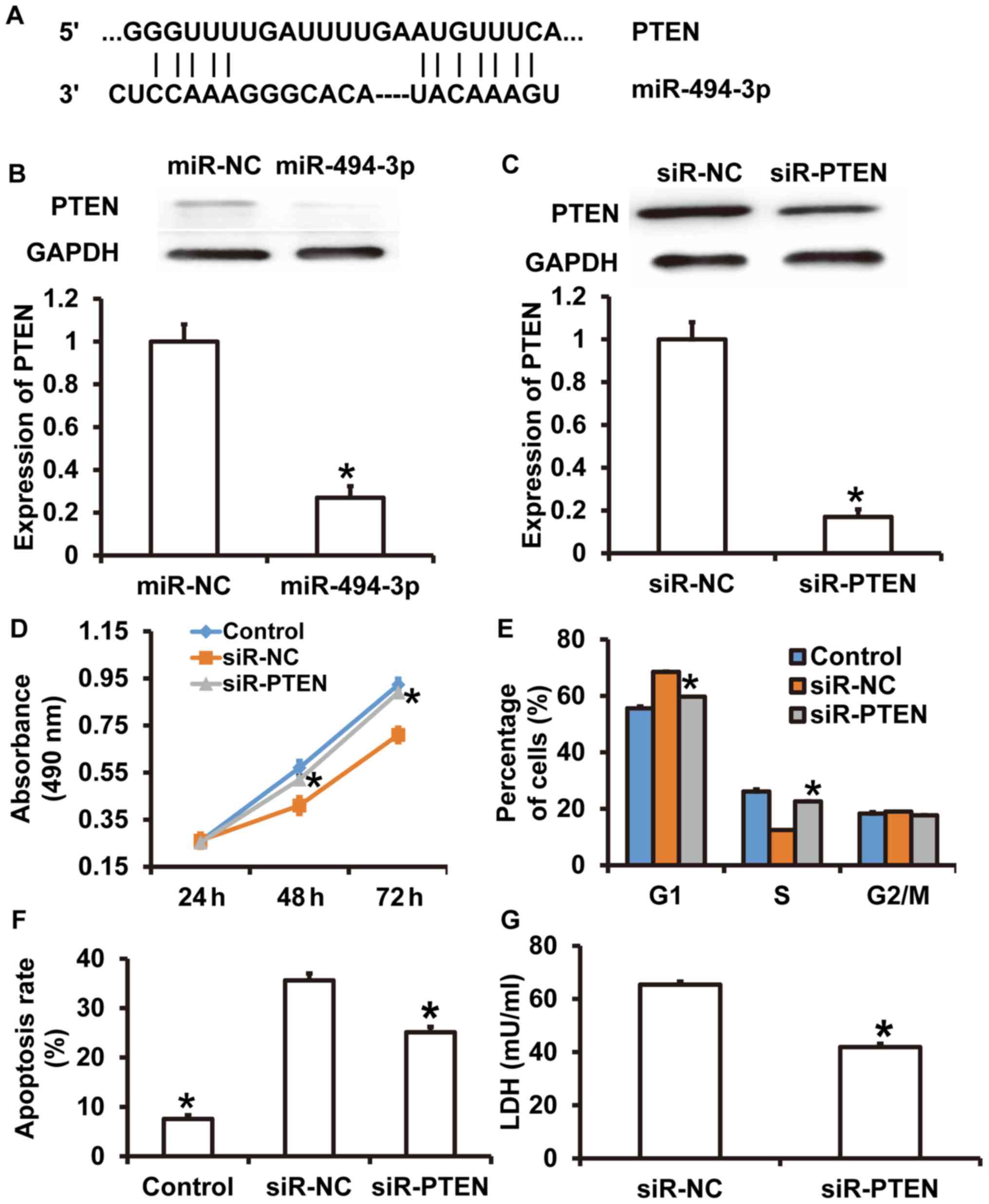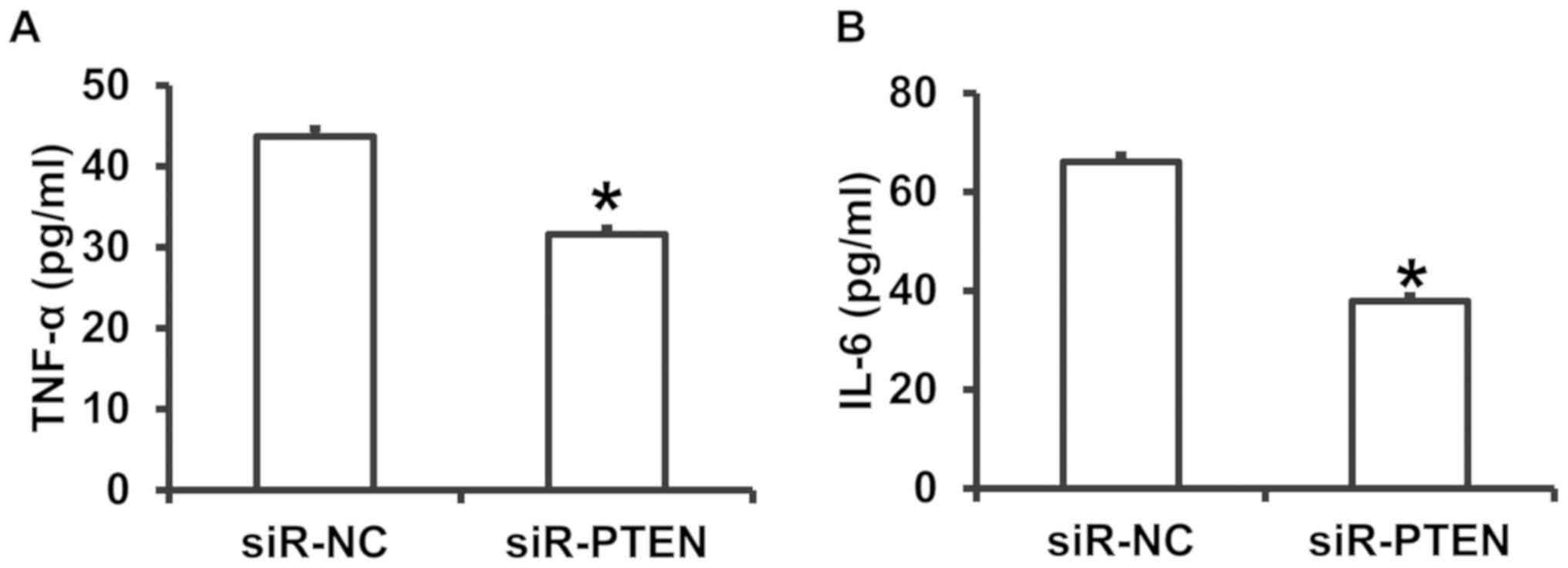|
1
|
Liu Y, Wan W, Fang F, Guo L, Zhao Y, Zhang
X and Huang F: Clinical relevance of peroxisome
proliferator-activated receptor-gamma gene polymorphisms with
sepsis. J Clin Lab Anal. 32:e223402018. View Article : Google Scholar : PubMed/NCBI
|
|
2
|
Zhou X, Ding B, Ye Y, Tang G and Zhang Z:
An appropriate mean arterial pressure (MAP) does not always mean
hemodynamic stability in septic shock patients. J Crit Care.
43:397–398. 2017. View Article : Google Scholar : PubMed/NCBI
|
|
3
|
Santos-Junior MN, Rezende IS, Souza CLS,
Barbosa MS, Campos GB, Brito LF, Queiroz ÉC, Barbosa EN, Teixeira
MM, Da Silva LO, et al: Ureaplasma diversum and its
membrane-associated lipoproteins activate inflammatory genes
through the NF-κB pathway via toll-like receptor 4. Front
Microbiol. 9:15382018. View Article : Google Scholar : PubMed/NCBI
|
|
4
|
Zasada M, Lenart M, Rutkowska-Zapala M,
Stec M, Durlak W, Grudzień A, Krzeczkowska A, Mól N, Pilch M,
Siedlar M and Kwinta P: Analysis of PD-1 expression in the monocyte
subsets from non-septic and septic preterm neonates. PLoS One.
12:e01868192017. View Article : Google Scholar : PubMed/NCBI
|
|
5
|
Xu LY and Xu D: Changes in blood oxygen
metabolism indices and their clinical significance in children with
septic shock. Zhongguo Dang Dai Er Ke Za Zhi. 19:1124–1128.
2017.(In Chinese). PubMed/NCBI
|
|
6
|
Dargent A, Nguyen M, Fournel I, Bourredjem
A, Charles PE and Quenot JP; EPISS study group, : Vasopressor
cumulative dose requirement and risk of early death during septic
shock: An analysis from the episs cohort. Shock. 49:625–630. 2018.
View Article : Google Scholar : PubMed/NCBI
|
|
7
|
Sharawy N, Mahrous R, Whynot S, George R
and Lehmann C: Clinical relevance of early sublingual
microcirculation monitoring in septic shock patients. Clin
Hemorheol Microcirc. 68:347–359. 2018. View Article : Google Scholar : PubMed/NCBI
|
|
8
|
Park JS, Choi HS, Yim SY and Lee SM: Heme
oxygenase-1 protects the liver from septic injury by modulating
tLR4-mediated mitochondrial quality control in mice. Shock.
50:209–218. 2018. View Article : Google Scholar : PubMed/NCBI
|
|
9
|
Ding W and Jiang L: The Effects of
afebrile characteristic on patients with suspected septic shock:
Several facts need to be noticed. Crit Care Med. 45:e11912017.
View Article : Google Scholar : PubMed/NCBI
|
|
10
|
Kim YC, Song JE, Kim EJ, Choi H, Jeong WY,
Jung IY, Jeong SJ, Ku NS, Choi JY, Song YG and Kim JM: A simple
scoring system using the red blood cell distribution width, delta
neutrophil index, and platelet count to predict mortality in
patients with severe sepsis and septic shock. J Intensive Care Med.
1:8850666187874482018.
|
|
11
|
Vazquez-Guillamet MC, Vazquez R, Micek ST
and Kollef MH: Predicting resistance to piperacillin-tazobactam,
cefepime and meropenem in septic patients with bloodstream
infection due to gram-negative bacteria. Clin Infect Dis.
65:1607–1614. 2017. View Article : Google Scholar : PubMed/NCBI
|
|
12
|
Erwin BL, Denaburg MA, Barker AB, McArdle
PJ, Windham ST and Morgan CJ: Evaluation of vasopressin for septic
shock in patients on chronic renin-angiotensin-aldosterone system
inhibitors. Crit Care Med. 45:e1226–e1232. 2017. View Article : Google Scholar : PubMed/NCBI
|
|
13
|
Hyvernat H, Doyen D, Barel R, Kaidomar M,
Goubaux B, Pradier C, Panaïa-Ferrari P, Dellamonica J and Bernardin
G: Is inappropriate response to cosyntropin stimulation test an
indication of corticosteroid resistance in septic shock? Shock.
498:543–550. 2018. View Article : Google Scholar
|
|
14
|
Makara MA, Hoang KV, Ganesan LP, Crouser
ED, Gunn JS, Turner J, Schlesinger LS, Mohler PJ and Rajaram MV:
Cardiac electrical and structural changes during bacterial
infection: An instructive model to study cardiac dysfunction in
sepsis. J Am Heart Assoc. 5:e0038202016. View Article : Google Scholar : PubMed/NCBI
|
|
15
|
Martin L, Peters C, Schmitz S, Moellmann
J, Martincuks A, Heussen N, Lehrke M, Müller-Newen G, Marx G and
Schuerholz T: Soluble heparan sulfate in serum of septic shock
patients induces mitochondrial dysfunction in murine
cardiomyocytes. Shock. 44:569–577. 2015. View Article : Google Scholar : PubMed/NCBI
|
|
16
|
Huang L, Zheng M, Zhou Y, Zhu J, Zhu M,
Zhao F and Cui S: Tanshinone IIA attenuates cardiac dysfunction in
endotoxin-induced septic mice via inhibition of NADPH oxidase
2-related signaling pathway. Int Immunopharmacol. 28:444–449. 2015.
View Article : Google Scholar : PubMed/NCBI
|
|
17
|
Feng Y, Zou L, Chen C, Li D and Chao W:
Role of cardiac- and myeloid-MyD88 signaling in endotoxin shock: A
study with tissue-specific deletion models. Anesthesiology.
121:1258–1269. 2014. View Article : Google Scholar : PubMed/NCBI
|
|
18
|
Kimura A, Kitajima M, Nishida K, Serada S,
Fujimoto M, Naka T, Fujii-Kuriyama Y, Sakamato S, Ito T, Handa H,
Tanaka T, et al: NQO1 inhibits the TLR-dependent production of
selective cytokines by promoting IκB-ζ degradation. J Exp Med.
215:2197–2209. 2018. View Article : Google Scholar : PubMed/NCBI
|
|
19
|
Gu X, Wei C, Zhu X, Lu F, Sheng B and Zang
X: Effect of interleukin-31 on septic shock through regulating
inflammasomes and interleukin-1β. Exp Ther Med. 16:171–177.
2018.PubMed/NCBI
|
|
20
|
Li T, Sun XZ, Lai DH, Li X and He YZ:
Fever and systemic inflammatory response syndrome after retrograde
intrarenal surgery: Risk factors and predictive model. Kaohsiung J
Med Sci1. 34:400–408. 2018. View Article : Google Scholar
|
|
21
|
Kawamoto E, Masui-Ito A, Eguchi A, Soe ZY,
Prajuabjinda O, Darkwah S, Park EJ, Imai H and Shimaoka M: Integrin
and PD-1 ligand expression on circulating extracellular vesicles in
systemic inflammatory response syndrome and sepsis. Shock.
2018.(Epub ahead of print). View Article : Google Scholar : PubMed/NCBI
|
|
22
|
Zhao W, Shen G, Ren H, Liang, Yu X, Zhang
Z, Huang J, Qiu T, Tang J, Shang Q, et al: Therapeutic potential of
microRNAs in osteoporosis function by regulating the biology of
cells related to bone homeostasis. J Cell Physiol. 2018.(Epub ahead
of print).
|
|
23
|
Kanthaje S, Makol A and Chakraborti A:
Sorafenib response in hepatocellular carcinoma: MicroRNAs as tuning
forks miRNAs as regulators of sorafenib response in HCC. Hepatol
Res. 38:5–14. 2018. View Article : Google Scholar
|
|
24
|
Thyagarajan A, Shaban A and Sahu RP: miRNA
directed cancer therapies: Implications in melanoma intervention. J
Pharmacol Exp Ther. 364:1–12. 2018. View Article : Google Scholar : PubMed/NCBI
|
|
25
|
Ge C, Liu J and Dong S: MIRNA-214 protects
sepsis-induced myocardial injury. Shock. 50:112–118. 2018.
View Article : Google Scholar : PubMed/NCBI
|
|
26
|
Diao H, Liu B, Shi Y, Song C, Guo Z, Liu
N, Song X, Lu Y, Lin X and Li Z: MicroRNA-210 alleviates oxidative
stress-associated cardiomyocyte apoptosis by regulating BNIP3.
Biosci Biotechnol Biochem. 81:1712–1720. 2017. View Article : Google Scholar : PubMed/NCBI
|
|
27
|
Salati S, Salvestrini V, Carretta C,
Genovese E, Rontauroli S, Zini R, Rossi C, Ruberti S, Bianchi E,
Barbieri G, et al: Deregulated expression of miR-29a-3p, miR-494-3p
and miR-660-5p affects sensitivity to tyrosine kinase inhibitors in
CML leukemic stem cells. Oncotarget. 8:49451–49469. 2017.
View Article : Google Scholar : PubMed/NCBI
|
|
28
|
Welten SM, Bastiaansen AJ, de Jong RC, de
Vries MR, Peters EA, Boonstra MC, Sheikh SP, La Monica N,
Kandimalla ER and Quax PH: Inhibition of 14q32 MicroRNAs miR-329,
miR-487b, miR-494, and miR-495 increases neovascularization and
blood flow recovery after ischemia. Circ Res. 115:696–708. 2014.
View Article : Google Scholar : PubMed/NCBI
|
|
29
|
Yao R, Feng WT, Xu LJ, Zhong XM, Liu H,
Sun Y and Zhou LL: DUXAP10 regulates proliferation and apoptosis of
chronic myeloid leukemia via PTEN pathway. Eur Rev Med Pharmacol
Sci. 22:4934–4940. 2018.PubMed/NCBI
|
|
30
|
Sun G, Lu Y, Li Y, Mao J, Zhang J, Jin Y,
Li Y, Sun Y, Liu L and Li L: miR-19a protects cardiomyocytes from
hypoxia/reoxygenation-induced apoptosis via PTEN/PI3K/p-Akt
pathway. Biosci Rep. 37:2017. View Article : Google Scholar
|
|
31
|
Liu L, Yan X, Wu D, Yang Y, Li M, Su Y,
Yang W, Shan Z, Gao Y and Jin Z: High expression of Ras-related
protein 1A promotes an aggressive phenotype in colorectal cancer
via PTEN/FOXO3/CCND1 pathway. J Exp Clin Cancer Res. 37:1782018.
View Article : Google Scholar : PubMed/NCBI
|
|
32
|
Zhang J, Li L, Peng Y, Chen Y, Lv X, Li S,
Qin X, Yang H, Wu C and Liu Y: Surface chemistry induces
mitochondria-mediated apoptosis of breast cancer cells via
PTEN/PI3K/AKT signaling pathway. Biochim Biophys Acta.
1865:172–185. 2018. View Article : Google Scholar
|
|
33
|
Pero-Gascon R, Sanz-Nebot V, Berezovski MV
and Benavente F: Analysis of circulating microRNAs and their
post-transcriptional modifications in cancer serum by on-line
solid-phase extraction-capillary electrophoresis-mass spectrometry.
Anal Chem. 90:6618–6625. 2018. View Article : Google Scholar : PubMed/NCBI
|
|
34
|
Livak KJ and Schmittgen TD: Analysis of
relative gene expression data using real-time quantitative PCR and
the 2(-Delta Delta C(T)) method. Methods. 25:402–408. 2001.
View Article : Google Scholar : PubMed/NCBI
|
|
35
|
Gossack-Keenan KL and Kam AJ: Toxic shock
syndrome: Still a timely diagnosis. Pediatr Emerg Car. 2017.(Epub
ahead of print). View Article : Google Scholar
|
|
36
|
Zhang M, Zou L, Feng Y, Chen YJ, Zhou Q,
Ichinose F and Chao W: Toll-like receptor 4 is essential to
preserving cardiac function and survival in low-grade polymicrobial
sepsis. Anesthesiology. 121:1270–1280. 2014. View Article : Google Scholar : PubMed/NCBI
|
|
37
|
Krome S: MikroRNA im septischen Schock
verändert. Anästhesiol Intensivmed Notfallmed Schmerzther. 51:654.
2016. View Article : Google Scholar
|
|
38
|
Geng L, Zhang T, Liu W and Chen Y:
miR-494-3p modulates the progression of in vitro and in vivo
Parkinson's disease models by targeting SIRT3. Neurosci Lett.
675:23–30. 2018. View Article : Google Scholar : PubMed/NCBI
|
|
39
|
Wang Y, Ouyang M, Wang Q and Jian Z:
MicroRNA-142-3p inhibits hypoxia/reoxygenationinduced apoptosis and
fibrosis of cardiomyocytes by targeting high mobility group box 1.
Int J Mol Med. 38:1377–1386. 2016. View Article : Google Scholar : PubMed/NCBI
|
|
40
|
Li Y, Wen S, Yao X, Liu W, Shen J, Deng W,
Tang J, Li C and Liu K: MicroRNA-378 protects against intestinal
ischemia/reperfusion injury via a mechanism involving the
inhibition of intestinal mucosal cell apoptosis. Cell Death Dis.
8:e31272017. View Article : Google Scholar : PubMed/NCBI
|
|
41
|
Zheng HZ, Fu XK, Shang JL, Lu RX, Ou YF
and Chen CL: Ginsenoside Rg1 protects rat bone marrow mesenchymal
stem cells against ischemia induced apoptosis through miR-494-3p
and ROCK-1. Eur J Pharmacol. 822:154–167. 2018. View Article : Google Scholar : PubMed/NCBI
|
|
42
|
Su S, Luo, Liu X, Liu J, Peng F, Fang C
and Li B: miR-494 up-regulates the PI3K/Akt pathway via targetting
PTEN and attenuates hepatic ischemia/reperfusion injury in a rat
model. Biosci Rep. 37:2017. View Article : Google Scholar
|
|
43
|
Zhu H, Xie R, Liu X, Shou J, Gu W, Gu S
and Che X: MicroRNA-494 improves functional recovery and inhibits
apoptosis by modulating PTEN/AKT/mTOR pathway in rats after spinal
cord injury. Biomed Pharmacother. 92:879–887. 2017. View Article : Google Scholar : PubMed/NCBI
|















